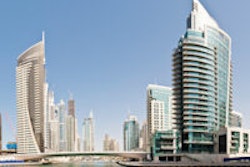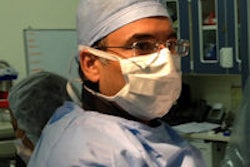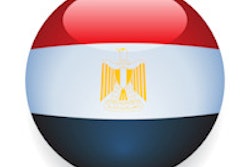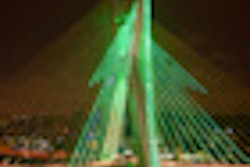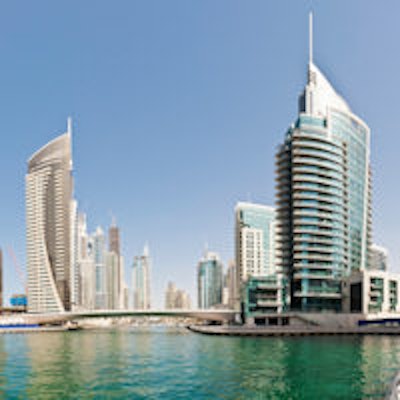
For the first time in its almost 90-year history, the International Congress of Radiology (ICR) will benefit from a fully integrated scientific program, according to the organizers of the event, to be held at the World Trade Centre in Dubai, United Arab Emirates, from 9 to 12 September.
An estimated 5,000 delegates are expected at ICR 2014. The International Society of Radiology (ISR) decided to switch the meeting from Sharm El Sheikh, Egypt, to Dubai last November, but despite the relocation, the Egyptian Society of Radiology and Nuclear Medicine (ESRNM) remains committed to making this congress the first of its kind: a fusion of Egyptian and international imaging, with global participation in every session.
Furthermore, each of the 13 subspecialty areas will be explored through a comprehensive range of session types, including categorical courses, educational, plenary, scientific, refresher, and clinical sessions taking place in parallel across 13 auditoriums. The program includes 155 scientific sessions and more than 200 speakers, and the congress database already contains more than 400 abstracts for oral and poster presentations.
 The organizers of ICR 2014 have adopted a fresh approach to the scientific program to attract thousands of delegates to Dubai.
The organizers of ICR 2014 have adopted a fresh approach to the scientific program to attract thousands of delegates to Dubai."Traditionally, the ISR only created a small percentage of the program, and instead the society of wherever the congress was taking place would formulate the lion's share. However, this time, both the ESRNM and the ISR were willing to have the same program and have, therefore, been able to share its organization," said Dr. Luis Martí-Bonmatí, ISR chair of the Scientific Program Committee and head of radiology at La Fe University and Quirón hospitals in Valencia, Spain. "This means that the program isn't split into the Egyptian part and the international part. For the first time, it's a truly joint congress, which bodes well for the future of this international meeting."
More than 30 societies will be participating in the program, with each charged with organizing a specific part. The European Society of Radiology (ESR), for example, was invited to participate in the cardiac program, while the RSNA is taking part in the head and neck program. The subjects were proposed by the 86-society-strong ISR, and each organization came up with its own ideas for topics and speakers.
In addition to gastrointestinal, cardiothoracic, and head and neck imaging sessions, delegates will also attend subspecialty sessions on women's imaging, pediatric, interventional and vascular, emergency imaging, musculoskeletal (MSK), oncologic, genitourinary tract, chest, and neuro imaging. Noninterpretive imaging concludes the list and will include sessions related to the integration of clinical research in clinical practice. Quality and safety will be addressed by the International Radiology Quality Network led by Dr. Lawrence Lau.
Topics pertaining to clinical research integration in clinical practice are the remit of the Spanish Society of Radiology: Drs. Lluis Donoso and Carmen Ayuso, radiologists at the University of Barcelona, will present on clinical trials, health technology assessments, and multidisciplinary team work, and Martí-Bonmatí will speak on imaging biomarkers from research to clinical practice. His second talk, to be presented during the liver cirrhosis workshop in the abdomen program, will focus on imaging findings and quantitative approaches in cirrhotic patients.
Targeting a wider range of professionals, the ESRNM and the International Society of Radiographers and Radiological Technologists have been instrumental in creating a full program for radiographers and also ensuring radiographer participation in other sessions during the 28th ICR.
At ICR 2014, radiographers and technicians will have their own program in 12 of the 13 subject areas; noninterpretive imaging is not included. Their own presentations will include how to improve image quality, how CT, plain MRI, and ultrasound work, plus quality assurance and control. Specific advanced sessions in quantitative diffusion-weighted MRI and a refresher course on MR spectroscopy also will be offered.
Full and comprehensive program
Overall, delegates will notice the program's intelligent format, according to Martí-Bonmatí. In MSK, for example, the scientific sessions will comprise two lectures of 20 minutes and also five scientific papers, each lasting seven minutes, with three minutes dedicated to discussion after each paper. Educational sessions, plus basic principles of and main features in ultrasound of tendon disorders (again using the example of MSK), will be complemented by 20-minute case-based sessions. MSK case sessions are set to feature abnormalities related to fractures and infection, particularly tuberculosis (TB).
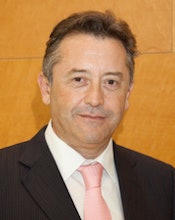 ICR 2014 will benefit from full international participation from the U.S., Europe, Asia, and Africa and coverage of familiar "troubles" common to all, according to Dr. Luis Martí-Bonmatí, ISR chair of the Scientific Program Committee.
ICR 2014 will benefit from full international participation from the U.S., Europe, Asia, and Africa and coverage of familiar "troubles" common to all, according to Dr. Luis Martí-Bonmatí, ISR chair of the Scientific Program Committee."Because TB is prevalent in Egypt and the Middle East as a whole -- and on the rise again, according to the World Health Organization -- we wanted to highlight the issue through speakers from societies involved with MSK across the U.S., Asia, and Egypt. Even this session is fully international and not country-based, as it might once have been," he explained.
The MSK categorical course, "MR imaging of the joints," has been organized by the American College of Radiology (ACR) and will include sessions on bone metastasis, bone vascularity, and the role of PET/CT.
Another program first, again to feature in the same 12 subspecialty areas included in the radiography program, will be the "ICR meets clinicians" component, with physicians predominantly from Dubai and Egypt participating. With regard to MSK, for example, radiologists and clinicians will discuss bone tumors in terms of what clinicians want to know and how radiologists can respond. Part of each of these clinical sessions will highlight research areas that promise much for clinical practice within the next 10 years.
The structure that supports the MSK program will also underpin the tracks on the other 11 subspecialties. The interventional program, for example, will be a combined collaboration between the Argentine, French, and Italian societies of radiology, among others. Like the other subspecialties, it will include scientific, educational, refresher, and clinical courses with clinician presence in sessions covering advanced procedures such as renal denervation with microwaves for treating renal hypertension.
Attention should also be drawn to the plenary sessions, which span a broad range of topics, according to Martí-Bonmatí. Among the many highlights, Dr. Philippe Caseiro-Alves, former president of the European Society of Gastrointestinal and Abdominal Radiology (ESGAR), will be presenting diffusion-weighted imaging (DWI) in abdominal cancer, while Dr. Selim Ashraf's session on paleoradiology in Egyptian mummies should prove a crowd puller. An honorary lecture on international radiology education will be presented by former ISR President Dr. Nicholas Gourtsoyiannis on Wednesday, 10 September.
Gathering the world in one place
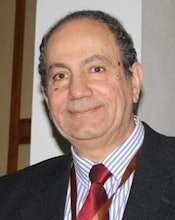 ESRNM President Dr. Tarek El-Diasty hopes to see many countries represented at ICR 2014, and insists there will a strong and active Egyptian delegation.
ESRNM President Dr. Tarek El-Diasty hopes to see many countries represented at ICR 2014, and insists there will a strong and active Egyptian delegation.Creating this congress has taken more work than any other previous ICR, and Martí-Bonmatí points to the Egyptian society's close involvement in the process. The hard work has led to a more comprehensive and integrated program that touches all the important aspects of radiology. He also pays tribute to the tireless work of his Egyptian colleagues, notably Dr. Wahid Tantawy, in securing knowledge and resources to send as many of their radiologists as possible to Dubai.
"The main difference seen in this year's meeting is full international coverage from the U.S., Europe, Asia, and Africa and a means of sharing familiar 'troubles' common to all. This is a unique advantage that other meetings don't possess," Martí-Bonmatí noted.
Echoing his sentiments, ESRNM President Dr. Tarek El-Diasty outlined the bittersweet outcome after many years of Egypt bidding for the chance to host the ICR, only to see their hard-won triumph fade as it became necessary to move the congress to Dubai. He points to the importance of not only the overall number of delegates attending but also the number of participating countries represented.
"Since our aim is to gather the world in one place, the organizing committee has been working hard to facilitate logistics for all nationalities, providing details online for a variety of two-star to five-star hotels, as well as entry visa requirements. Accommodation and flight services can be found on the congress website, and Emirates airlines is offering a 10% discount to all ICR delegates," he said. "To radiologists not yet registered, I would say: Come and raise your country's flag higher on the ISR world map."
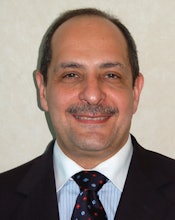 The ESRNM is supporting many of Egypt's younger generation of radiologists get to the 28th ICR, according to Dr. Wahid Tantawy, ICR chair of the Scientific Program Committee.
The ESRNM is supporting many of Egypt's younger generation of radiologists get to the 28th ICR, according to Dr. Wahid Tantawy, ICR chair of the Scientific Program Committee.He is keen to underline the Radiologists of Tomorrow initiative and the networking and educational opportunities it provides. The initiative is open to radiologists younger than age 40 who have not before been to ICR and who don't have a poster or oral presentation during the meeting. Moreover, El-Diasty and other society board members believe that a strong Egyptian delegation will be present. Opinions vary over Egyptian numbers, some citing a minimum of 400 delegates and others claiming the figure could reach 2,000.
"The decision to relocate to Dubai was a shock for the ESRNM. However, having a sense of responsibility, the society approved the change and continued to organize the conference," said Tantawy, ICR chair of the Scientific Program Committee and professor of radiology at Ain Shams University in Cairo.
"Changing the venue from Egypt to the Emirates was a difficult decision, given the financial implications for younger doctors and industrial partners. However, after continuous effort to get different organizations to help, and the ISR waiving our financial obligations, the ESRNM was able to support many young radiologists and urged all universities to do the same," Tantawy said. "I expect that this will be one of the strongest International Congress of Radiology meetings with a high level of attendance and education provided. I hope everybody contributing to and attending the congress will enjoy the meeting."




